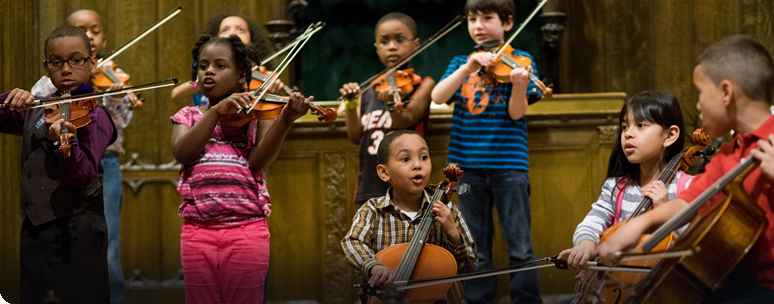Day 5-7: Chance Music
Today we started our experiment with chance music. In chance music (also called aleatory/aleatoric music), some element of the composition and/or the performance of the piece is left to chance. For a starting piece, we made a simple system which is a list of musical notes that are picked based on our birth months. There are 12 different notes in a chromatic scale and 12 months in a year, so we numbered the 12 notes then picked everyone’s birth month number notes. Then the performers (2 people this time) played their instruments using this list of notes. The performers were composing a piece as they played together, only using those picked notes, and all the rest of elements of music including rhythms, range of the notes, duration of the notes, space between notes, dynamics, mood of the music.. etc. were completely up to the performers. Then we each made a graphic music score (a graphic score is a score that’s not only written in modern musical notation). There was no rules or directions to make these scores, except they were made on a piece of paper, and they were for musical pieces. Things we used to make graphic scores included drawings, words, numbers, maps, and scraps of pictures from a magazine.
 Rolling dice to pick notes Rolling dice to pick notes
Then we had a curious performance of the pieces we just made. “For Imitated Banjo & Viola, created by voices” by Aiden S.

Performed by: Liam & Malachy H. [audio:http://www.communitymusicworks.org/medialab/wp-content/uploads/2011/12/aidens.mp3|titles=aiden’s] 2nd performance of the same piece was attempted by Aiden, Brandon, Liam, Malachy, Sofie, David, Jori and Sakiko. This time we played the piece as “For Imitated Banjo, Viola, Piano & Percussion created by voices”.
[audio:http://www.communitymusicworks.org/medialab/wp-content/uploads/2011/12/aidens-21.mp3|titles=aiden’s 2]
“A map for a conversation of 2 people” by David Lee watch?v=HK-H10nx0u0&feature=youtu.be Also as inspirations we watched “Aleatoric Water Music” video, listened to “Erratum Musical”, a chance operated piece made by Marcel Duchamp in 1913.
Sakiko also brought in a 4-track recorder, and we took turns recording ourselves (creating multi-track compositions). Here’s a photo of us working together on a track:
While people made individual pieces, the rest of us watched a documentary called RIP: A Remix Manifesto and talked about remixing and sampling and freedom in the digital age (see also FreeBieber.org) We also talked about a project Jori had recently seen in New Orleans called “The Music Box” (aka A Shantytown Sound Library, or Phase 1 of Dithyrambalina). What an amazing few days!
|



